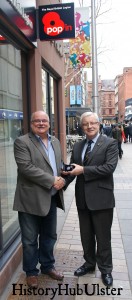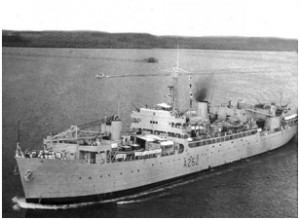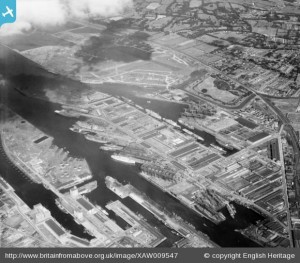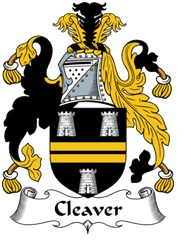
 A Family History
A Family History
Researched and Compiled by Richard Graham
COPYRIGHT RICHARD GRAHAM
 The Cleaver family originated in Scotland where one of the earliest recorded marriages took place between William Cleaver and Elizabeth Dunstone on 2nd February 1770. William served in the army, and the couple’s children were born and raised in the parish of Kilmallie, near Fort William in the Scottish Highlands. Upon his death in 1787, the family moved to Bishopstone, a small village close to the south coast of England in East Sussex.
The Cleaver family originated in Scotland where one of the earliest recorded marriages took place between William Cleaver and Elizabeth Dunstone on 2nd February 1770. William served in the army, and the couple’s children were born and raised in the parish of Kilmallie, near Fort William in the Scottish Highlands. Upon his death in 1787, the family moved to Bishopstone, a small village close to the south coast of England in East Sussex.
From there, the family dispersed to the West Indies, Victoria and Tasmania in Australia, New Zealand, Argentina, but for the purposes of this paper, I will focus on that branch of the family that relocated to Ireland in the mid-1800s.
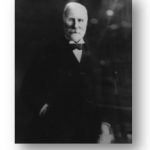 John Cleaver was born in Bishopstone on 23rd September 1841, the great grandson of William Cleaver of Fort William. He served his apprenticeship in retail in London, and in a bid to further his career, he crossed the Irish Sea in 1865 to manage one of the departments in the established firm of James Lindsay & Co; general drapers, silk mercers and linen merchants at the Ulster Arcade on Donegall Place. The Lindsay family had themselves made their way to Ireland from Scotland in 1678, where they played an active role in the Relief of Derry in 1689, before moving to Belfast to establish a “woollen, linen and haberdashery warehouse” at 15 Bridge Street, the then centre of commerce in the town, in 1822.
John Cleaver was born in Bishopstone on 23rd September 1841, the great grandson of William Cleaver of Fort William. He served his apprenticeship in retail in London, and in a bid to further his career, he crossed the Irish Sea in 1865 to manage one of the departments in the established firm of James Lindsay & Co; general drapers, silk mercers and linen merchants at the Ulster Arcade on Donegall Place. The Lindsay family had themselves made their way to Ireland from Scotland in 1678, where they played an active role in the Relief of Derry in 1689, before moving to Belfast to establish a “woollen, linen and haberdashery warehouse” at 15 Bridge Street, the then centre of commerce in the town, in 1822.
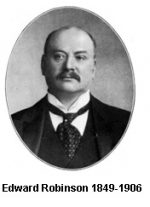 It was during his time at Lindsay Brothers, that John Cleaver met Edward Robinson, a young man from Ballymena, who had earlier secured for himself an apprenticeship with the same company. His father Alexander, was a woollen draper in the County Antrim town. Both men soon realised the enormous potential for the development of the sale of Irish linen products, and with financial assistance from their families, set up a business partnership in premises on Castle Place in 1870, styled as Robinson & Cleaver.
It was during his time at Lindsay Brothers, that John Cleaver met Edward Robinson, a young man from Ballymena, who had earlier secured for himself an apprenticeship with the same company. His father Alexander, was a woollen draper in the County Antrim town. Both men soon realised the enormous potential for the development of the sale of Irish linen products, and with financial assistance from their families, set up a business partnership in premises on Castle Place in 1870, styled as Robinson & Cleaver.
 The success of their business was based on the fact that until that time, it had been almost impossible to obtain locally produced goods at reasonable prices. They were quick to identify this gap in the market and within a short space of time, the business had expanded and the partnership moved to larger premises on High Street (left) in 1879. The potential for growth of such a business in Belfast at that time was phenomenal.
The success of their business was based on the fact that until that time, it had been almost impossible to obtain locally produced goods at reasonable prices. They were quick to identify this gap in the market and within a short space of time, the business had expanded and the partnership moved to larger premises on High Street (left) in 1879. The potential for growth of such a business in Belfast at that time was phenomenal.
On 12th August 1869, John Cleaver married Mary Anne Spence at Rich Hill Wesleyan Congregational Church in Co Armagh. They had met in Belfast, where Mary Anne had also come to seek work and soon they set up home at Ashley Villa, on Ashley Avenue, a middle class residential area just off the Lisburn Road, close to his business partner who resided on nearby Eglantine Avenue.
All of John and Mary’s children (3 sons and 5 daughters) were born at Ashley Villa:
-Arthur Spencer Cleaver (b 1870)
-John Martin Cleaver (b 1871)
-Kathleen Mary Cleaver (b 1872 – died, aged 9, 1882)
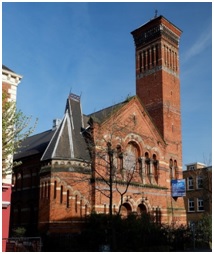
-James Frederick Cleaver (b1875)
-Mabel Cleaver (b 1877)
-Florence Edith Cleaver (b1878)
-Norah Heathcliff Cleaver (b 1881 – died, aged 9, 1890)
-Eileen Martha Esther Cleaver (b 1886)
The children were christened at nearby University Road Methodist Church (1865) – an institution that would prove to be pivotal in the life of the Cleaver family in Ireland.
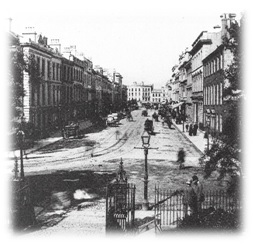 In addition to raising a large family, the business at High Street continued to expand. Belfast was fast becoming one of the leading manufacturing cities of the British Empire, with markets for products produced in North East Ireland opening up across the civilised world. The partners were not slow to capitalise on this phenomenal growth and soon they were supplying high quality items of Irish linen to households across the United Kingdom. Soon the company outgrew their premises on High Street and by the mid-1880s the partners began to look for larger premises. They purchased one of the last residential houses on Donegall Place (see right) which had a large garden onto Donegall Square North, and quickly commissioned one of the leading architects of the day, Young & McKenzie, to design a building that would be fitting for the business they had grown over the past 15 years. The vast majority of parcels despatched from Belfast came from the house of Robinson & Cleaver and the company pioneered overseas sales via their brochures to homes and businesses across the empire.
In addition to raising a large family, the business at High Street continued to expand. Belfast was fast becoming one of the leading manufacturing cities of the British Empire, with markets for products produced in North East Ireland opening up across the civilised world. The partners were not slow to capitalise on this phenomenal growth and soon they were supplying high quality items of Irish linen to households across the United Kingdom. Soon the company outgrew their premises on High Street and by the mid-1880s the partners began to look for larger premises. They purchased one of the last residential houses on Donegall Place (see right) which had a large garden onto Donegall Square North, and quickly commissioned one of the leading architects of the day, Young & McKenzie, to design a building that would be fitting for the business they had grown over the past 15 years. The vast majority of parcels despatched from Belfast came from the house of Robinson & Cleaver and the company pioneered overseas sales via their brochures to homes and businesses across the empire.
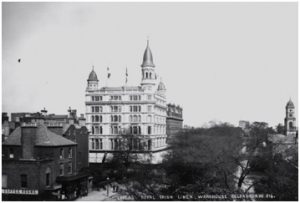 The ‘Royal Irish Linen Warehouse’ of Robinson & Cleaver opened for business on September 1888, the same year that Belfast received its charter as a city. With success came great wealth for the founding partners and by this time, they would have been the equivalent of millionaires in today’s money. This precipitated a move to a larger house on the Malone Road for the Cleaver family – a large Victorian terrace opposite Fisherwick Presbyterian Church.
The ‘Royal Irish Linen Warehouse’ of Robinson & Cleaver opened for business on September 1888, the same year that Belfast received its charter as a city. With success came great wealth for the founding partners and by this time, they would have been the equivalent of millionaires in today’s money. This precipitated a move to a larger house on the Malone Road for the Cleaver family – a large Victorian terrace opposite Fisherwick Presbyterian Church.
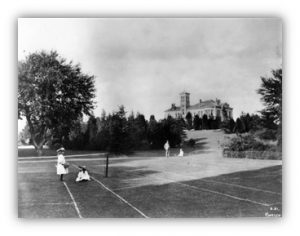 In 1892, such was the success of Robinson & Cleaver, that John Cleaver moved residence again, this time to the estate of ‘Dunraven’ on the Malone Road. Dunraven, a large Italianate Villa, had been built for the timber magnate and shipowner, James Porter Corry in 1870. It extended over several acres with its own lake and extensive parkland. It was in this house that John and Mary would spend the rest of their lives.
In 1892, such was the success of Robinson & Cleaver, that John Cleaver moved residence again, this time to the estate of ‘Dunraven’ on the Malone Road. Dunraven, a large Italianate Villa, had been built for the timber magnate and shipowner, James Porter Corry in 1870. It extended over several acres with its own lake and extensive parkland. It was in this house that John and Mary would spend the rest of their lives.
With success came prosperity, and John Cleaver was in the position to educate his children at the same time elevating himself to a position of importance in Ulster Society.
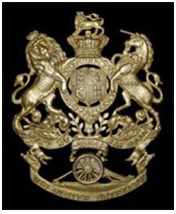 By 1900, his eldest son, (aged 29) Arthur Spencer Cleaver, in addition to becoming a director of Robinson & Cleaver, had embarked on a military career and became a second Lieutenant in the Southern Division of the Mid Ulster (Royal Field) Artillery (left) – a regiment within the British Army. He removed to London, primarily to look after the Regent Street store at the same time becoming an Honorary Lieutenant Colonel with the Royal Garrison Artillery, 1st Reserve Battery.
By 1900, his eldest son, (aged 29) Arthur Spencer Cleaver, in addition to becoming a director of Robinson & Cleaver, had embarked on a military career and became a second Lieutenant in the Southern Division of the Mid Ulster (Royal Field) Artillery (left) – a regiment within the British Army. He removed to London, primarily to look after the Regent Street store at the same time becoming an Honorary Lieutenant Colonel with the Royal Garrison Artillery, 1st Reserve Battery.
 It was however his wife, Adelaide, who achieved notoriety as an adventurer and women pioneer in aviation in the 1920s and 30s. She was an avid mountain climber, expert driver and skilled motor mechanic. Adelaide Franklin Pollock was born in Newtownards in 1896, the eldest daughter of the Rt Hon Hugh MacDowell Pollock, first Minister of Finance in the Government of Northern Ireland created in 1921. Having developed an important flour importing business, Pollock was independently wealthy, and as Chairman of the Belfast Harbour Commissioners had one of the docks named in his honour. Coming from such a privileged position within Ulster Society this was the type of union John Cleaver would have nurtured and encouraged for his offspring.
It was however his wife, Adelaide, who achieved notoriety as an adventurer and women pioneer in aviation in the 1920s and 30s. She was an avid mountain climber, expert driver and skilled motor mechanic. Adelaide Franklin Pollock was born in Newtownards in 1896, the eldest daughter of the Rt Hon Hugh MacDowell Pollock, first Minister of Finance in the Government of Northern Ireland created in 1921. Having developed an important flour importing business, Pollock was independently wealthy, and as Chairman of the Belfast Harbour Commissioners had one of the docks named in his honour. Coming from such a privileged position within Ulster Society this was the type of union John Cleaver would have nurtured and encouraged for his offspring.
Adelaide was one of the few women to be granted a pilot’s licence in the UK in the inter war era. She flew from London to India and back in 1929, and in the following year, boarded a steamer from London to New York, with her ‘Moth’ on board, with the intention of becoming the first British woman to fly across the United States. After many thrills and spills, she eventually achieved this goal, being welcomed in Hollywood, California as somewhat of a major celebrity. She subsequently visited China, Japan and Egypt in her travels across the globe.
 See thread on Rootschat here: http://www.rootschat.com/forum/index.php?topic=686031.9
See thread on Rootschat here: http://www.rootschat.com/forum/index.php?topic=686031.9
Arthur and Adelaide had two sons, both of which followed their father into the armed forces. Cecil Alwyn Spencer Cleaver was born in 2 Southwick Crescent, Hyde Park, the family home in London in 1907, and embarked on a military career. As a gentleman cadet, he attended the Royal Military College, Sandhurst, before joining the Grenadier Guards becoming a 2nd Lieutenant with the Foot Guards in 1926. On 3rd October 1930, he arrived in New York having travelled out of Southampton aboard RMS Berengaria, flagship of the Cunard Line. Cecil was killed in action whilst serving with the British forces in Tanganykia Territory, East Africa in 1935, at the age of 28 without issue. His death occurred at Tabora Hospital. This part of Africa was a colony of the British Empire and under British Administration having formerly been under German control before the First World War
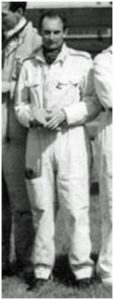 Gordon Neil Spencer ‘Mouse’ Cleaver was born in Stanmore, Middlesex, in 1910, and educated at Harrow. As an accomplished skier, he was the inaugural winner of the ‘Hahnenkammrennen Combined’ in Austria in 1931. The ‘Cleaver Cup’ was subsequently named after his success on the slopes. He joined 601 Fighter Squadron (The Millionaire’s Squadron) Auxiliary Air Force in 1937, being promoted to the position of Flying Officer in October 1938. Upon the outbreak of the Second World War he was mobilised in November 1939, travelling to France with his Squadron to Merville in Northern France. He claimed 7 confirmed “kills” during the Battle of Britain before his hurricane was shot down during combat over Winchester. Although he baled out, the fragments from the Perspex canopy on his plane, shattered into his eyes and face blinding him in the right eye. For his valour, he was awarded the Distinguished Flying Cross (DFC). Despite his injuries he remained in the RAF throughout the war, being released on medical grounds in November 1943, retaining the rank of Squadron Leader. Following on from the injuries he received, Cleaver underwent 18 operations on his eyes under the accomplished eye surgeon Harold Ridley. It was during work carried out during these procedures that Ridley developed the intraocular lens, a major development in repairing damage to the human eye.
Gordon Neil Spencer ‘Mouse’ Cleaver was born in Stanmore, Middlesex, in 1910, and educated at Harrow. As an accomplished skier, he was the inaugural winner of the ‘Hahnenkammrennen Combined’ in Austria in 1931. The ‘Cleaver Cup’ was subsequently named after his success on the slopes. He joined 601 Fighter Squadron (The Millionaire’s Squadron) Auxiliary Air Force in 1937, being promoted to the position of Flying Officer in October 1938. Upon the outbreak of the Second World War he was mobilised in November 1939, travelling to France with his Squadron to Merville in Northern France. He claimed 7 confirmed “kills” during the Battle of Britain before his hurricane was shot down during combat over Winchester. Although he baled out, the fragments from the Perspex canopy on his plane, shattered into his eyes and face blinding him in the right eye. For his valour, he was awarded the Distinguished Flying Cross (DFC). Despite his injuries he remained in the RAF throughout the war, being released on medical grounds in November 1943, retaining the rank of Squadron Leader. Following on from the injuries he received, Cleaver underwent 18 operations on his eyes under the accomplished eye surgeon Harold Ridley. It was during work carried out during these procedures that Ridley developed the intraocular lens, a major development in repairing damage to the human eye.
John Cleaver’s first born daughter, Kathleen, died at the age of 9 years, in 1882, at the family home on Ashley Avenue, before the move to Dunraven, most likely from TB which claimed the lives of thousands of people in the town of Belfast at that time
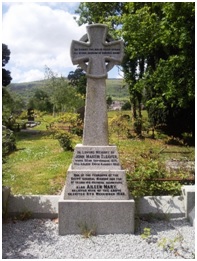 His second son, (John) Martin Cleaver, born in 1871, was educated in England and Germany, gaining a BA from the Royal University of Ireland (precursor to QUB) and graduating from TCD with a law degree in 1893. He set up his own practice as a solicitor later that year at premises on Wellington Place. In 1897, he took into partnership William Fulton, whose father John Fulton, was a linen manufacturer at the firm of John Fulton & Co on Ormeau Avenue. The partnership was style as Cleaver & Fulton. Both the Cleavers and Fultons were Methodists, with John Fulton being greatly interested in Foreign Missions, in addition to being solicitor to the Board of Governors at Methodist College. Soon after the partnership was established, Martin Cleaver, influenced by Fulton’s vision, retired from the law, devoting his whole time to the Egypt General Mission of which he was one of the founders. He arrived in Alexandria, Egypt on 31st January 1898, one of a group of 7 missionaries where he met Aileen Mary White, who had also carried out missionary work in Egypt. After their marriage, they both returned to Alexandria, but after four years of travelling in North Africa, his health broke down, and he took up residence in London as Secretary to the Mission.He later went on to co-found the ‘Fellowship of Faith for the Muslims’ (1915) an international fellowship of Christians who have a concern for the Muslim world, publishing such pamphlets as “Why do the Muslims need the Gospel?”Having been at Keswick in 1915, he returned to visit his father at Dunraven in Belfast, but became ill and died during that visit in August of that year. Both J Martin Cleaver and his wife Aileen are buried at Belfast City Cemetery. The company he established in 1893, Cleaver Fulton Rankin, remains one of Northern Ireland’s leading law firms.
His second son, (John) Martin Cleaver, born in 1871, was educated in England and Germany, gaining a BA from the Royal University of Ireland (precursor to QUB) and graduating from TCD with a law degree in 1893. He set up his own practice as a solicitor later that year at premises on Wellington Place. In 1897, he took into partnership William Fulton, whose father John Fulton, was a linen manufacturer at the firm of John Fulton & Co on Ormeau Avenue. The partnership was style as Cleaver & Fulton. Both the Cleavers and Fultons were Methodists, with John Fulton being greatly interested in Foreign Missions, in addition to being solicitor to the Board of Governors at Methodist College. Soon after the partnership was established, Martin Cleaver, influenced by Fulton’s vision, retired from the law, devoting his whole time to the Egypt General Mission of which he was one of the founders. He arrived in Alexandria, Egypt on 31st January 1898, one of a group of 7 missionaries where he met Aileen Mary White, who had also carried out missionary work in Egypt. After their marriage, they both returned to Alexandria, but after four years of travelling in North Africa, his health broke down, and he took up residence in London as Secretary to the Mission.He later went on to co-found the ‘Fellowship of Faith for the Muslims’ (1915) an international fellowship of Christians who have a concern for the Muslim world, publishing such pamphlets as “Why do the Muslims need the Gospel?”Having been at Keswick in 1915, he returned to visit his father at Dunraven in Belfast, but became ill and died during that visit in August of that year. Both J Martin Cleaver and his wife Aileen are buried at Belfast City Cemetery. The company he established in 1893, Cleaver Fulton Rankin, remains one of Northern Ireland’s leading law firms.
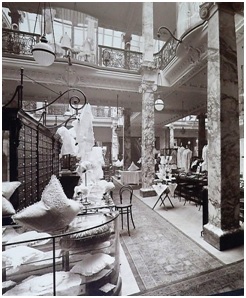 John Cleaver’s third son, (James) Frederick was born at Ashley Villa on 8th June 1875, and after being educated in Belfast and Germany, he travelled the world, visiting Australia and New Zealand, before following his father into the family business at Robinson & Cleaver, in 1895. The firm had developed branches throughout the UK including Regent Street, London; and Church Street, Liverpool. The importance of the company to the economy of Belfast cannot be underestimated. Robinson & Cleaver sent more parcels containing linen products of Irish manufacture out of the city of Belfast than any other business. Their store on London’s Regent Street was one of the most opulent and exclusive in the capital (right). He soon became Managing Director of the firm at its headquarters on Donegall Place (1906) and resided at a house called ‘Bishopstone’ on Deramore Park, recalling the origins of his father’s home in Essex. He married, in 1901, Sarah Hammond Fulton, eldest daughter of John Fulton and sister of the partner of his brother’s law firm, Cleaver and Fulton (see J Martin Cleaver).
John Cleaver’s third son, (James) Frederick was born at Ashley Villa on 8th June 1875, and after being educated in Belfast and Germany, he travelled the world, visiting Australia and New Zealand, before following his father into the family business at Robinson & Cleaver, in 1895. The firm had developed branches throughout the UK including Regent Street, London; and Church Street, Liverpool. The importance of the company to the economy of Belfast cannot be underestimated. Robinson & Cleaver sent more parcels containing linen products of Irish manufacture out of the city of Belfast than any other business. Their store on London’s Regent Street was one of the most opulent and exclusive in the capital (right). He soon became Managing Director of the firm at its headquarters on Donegall Place (1906) and resided at a house called ‘Bishopstone’ on Deramore Park, recalling the origins of his father’s home in Essex. He married, in 1901, Sarah Hammond Fulton, eldest daughter of John Fulton and sister of the partner of his brother’s law firm, Cleaver and Fulton (see J Martin Cleaver).
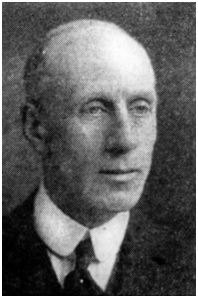 Fred Cleaver was a staunch Unionist and Ulsterman. He was an active member of the Belfast Chamber of Commerce; the Royal Ulster Agricultural Society; the Belfast Harbour Board; The Belfast Chamber of Trade, and was Chairman of the Ulster Tourist Development Association. As a member of the Ulster Unionist Council, he took an active part in the Anti Home Rule campaign and he took a leading part in the organising and equipping of the Ulster Division in the run-up to the Great War of 1914-18. During the war, he led an expedition to retrieve the US crew of the SS Otranto which sank in 1918 whilst in use as an armed merchant cruiser. For his services, he was Knighted in 1927. Upon his father’s death in 1926, Sir Frederick became Chairman of Robinson & Cleaver, but such was the international reputation of the company that several approached were made to acquire the capital from the family controlled concern. The ordinary shares of the company were transferred to Edward de Stein, a merchant banker, in 1935, with Sir Frederick and his brother Arthur being retained in an advisory capacity.
Fred Cleaver was a staunch Unionist and Ulsterman. He was an active member of the Belfast Chamber of Commerce; the Royal Ulster Agricultural Society; the Belfast Harbour Board; The Belfast Chamber of Trade, and was Chairman of the Ulster Tourist Development Association. As a member of the Ulster Unionist Council, he took an active part in the Anti Home Rule campaign and he took a leading part in the organising and equipping of the Ulster Division in the run-up to the Great War of 1914-18. During the war, he led an expedition to retrieve the US crew of the SS Otranto which sank in 1918 whilst in use as an armed merchant cruiser. For his services, he was Knighted in 1927. Upon his father’s death in 1926, Sir Frederick became Chairman of Robinson & Cleaver, but such was the international reputation of the company that several approached were made to acquire the capital from the family controlled concern. The ordinary shares of the company were transferred to Edward de Stein, a merchant banker, in 1935, with Sir Frederick and his brother Arthur being retained in an advisory capacity.
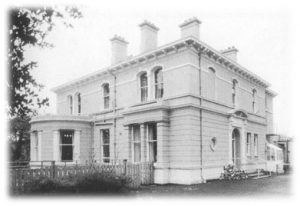 Sir Frederick Cleaver died suddenly on the evening of Saturday 31st March 1936, following his decision to take a walk from his home, Marlborough Park House, to which he had moved in 1927 (left). He had reached Stranmillis Road, when he collapsed and died. He was survived by his wife Lady Sarah Cleaver who died at Broomhill Park in December 1951. Like so many other members of the family, she also took an active interest in the work of the Methodist missions.
Sir Frederick Cleaver died suddenly on the evening of Saturday 31st March 1936, following his decision to take a walk from his home, Marlborough Park House, to which he had moved in 1927 (left). He had reached Stranmillis Road, when he collapsed and died. He was survived by his wife Lady Sarah Cleaver who died at Broomhill Park in December 1951. Like so many other members of the family, she also took an active interest in the work of the Methodist missions.
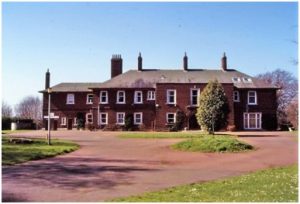 John Cleaver’s eldest surviving daughter, Mabel, was born in March 1877 and in what was not perhaps a surprising move, she married Edward (Ned) Robinson on 12th June 1901 at University Road Methodist Church. Ned Robinson was the eldest son of Edward Robinson, one of the founders of Robinson & Cleaver and was a joint managing director of the firm at Donegall Place. They began their married life at a house on Somerton Park, but following the death of his father in 1906, they moved to a magnificent estate at Shaw’s Bridge overlooking the Lagan named Terrace Hill. It was the sale of the company to Edward De Stein in 1936, that precipitated the couple to demolish the original house of 1856. Ned and Mabel who enjoyed a fantastic social life, built a sprawling new house in an American neo-Georgian style, the design being executed by Young & McKenzie, (who designed the original store on Donegall Place in 1888) and in which they could entertain the cream of Ulster Society. Mabel had two daughters, who were brought up in a very privileged environment. Terrace Hill extended to over 9,200 sq feet, and had beautifully manicured gardens overlooking Barnett’s Demesne to Malone House on the other side of the valley. The house had tennis courts and a swimming pool. The eldest, Gwendoline, married Peter Swann, an insurance broker of the Wirral and left Northern Ireland in 1951, whilst Inez married Thomas Agnew, a land agent in Belfast. They were the last occupants to live at Macedon House at Whiteabbey, before it was taken over by Barnardo’s as a children’s home in 1950, as was Terrace Hill, after the departure of the Clokey family in 1970. Inez died in 1978 without issue
John Cleaver’s eldest surviving daughter, Mabel, was born in March 1877 and in what was not perhaps a surprising move, she married Edward (Ned) Robinson on 12th June 1901 at University Road Methodist Church. Ned Robinson was the eldest son of Edward Robinson, one of the founders of Robinson & Cleaver and was a joint managing director of the firm at Donegall Place. They began their married life at a house on Somerton Park, but following the death of his father in 1906, they moved to a magnificent estate at Shaw’s Bridge overlooking the Lagan named Terrace Hill. It was the sale of the company to Edward De Stein in 1936, that precipitated the couple to demolish the original house of 1856. Ned and Mabel who enjoyed a fantastic social life, built a sprawling new house in an American neo-Georgian style, the design being executed by Young & McKenzie, (who designed the original store on Donegall Place in 1888) and in which they could entertain the cream of Ulster Society. Mabel had two daughters, who were brought up in a very privileged environment. Terrace Hill extended to over 9,200 sq feet, and had beautifully manicured gardens overlooking Barnett’s Demesne to Malone House on the other side of the valley. The house had tennis courts and a swimming pool. The eldest, Gwendoline, married Peter Swann, an insurance broker of the Wirral and left Northern Ireland in 1951, whilst Inez married Thomas Agnew, a land agent in Belfast. They were the last occupants to live at Macedon House at Whiteabbey, before it was taken over by Barnardo’s as a children’s home in 1950, as was Terrace Hill, after the departure of the Clokey family in 1970. Inez died in 1978 without issue
Ned died at Terrace Hill on 7th December 1947, after which the house was sold to the Clokey family of King Street in Belfast. Mabel died two years later in 1949 at Musgrave Nursing home aged 72.
John and Mary Anne Cleaver lost another one of their children to an early death in 1890, when Norah Heathfield Cleaver died at the young age of 9 years old. She is buried with her parents in the family plot at Belfast City Cemetery.
Their two remaining daughters left Belfast and moved to England where they married and had families. In doing so they left few members of the family residing in Northern Ireland after Sir Frederick’s sudden death in 1936. Perhaps they felt an affinity with their origins in Bishopstone, where many of the Cleaver family originate from. Florence died in Poole in Dorset in 1946, aged 68, but is commemorated on the family memorial with her parents. She had married Norman MacNaughton in 1911, whilst Eileen married Charles Mitchell Clegg in 1914 and died in Harrowgate, Yorkshire in August 1973, aged 87
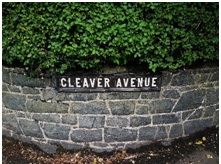 Today there are several reminders of the power and influence of the Cleaver family in Ireland, although there are no remaining family members now resident here. The site of the once magnificent family home and estate at Dunraven, is now covered in villa developments from the 1930s, when the house was sold, and is now known as Cleaver Park and Cleaver Avenue, off the Malone Road.
Today there are several reminders of the power and influence of the Cleaver family in Ireland, although there are no remaining family members now resident here. The site of the once magnificent family home and estate at Dunraven, is now covered in villa developments from the 1930s, when the house was sold, and is now known as Cleaver Park and Cleaver Avenue, off the Malone Road.
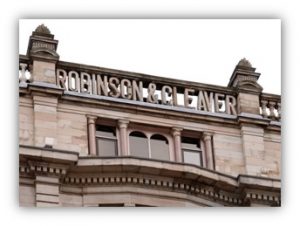 The magnificent department store buildings of Robinson & Cleaver still stand on the Corner of Donegall Place and Donegall Square North, as they do in London, although the family connection with the business was severed in 1936. The achievements of the company in obtaining several Royal Warrants and supplying Royal households across the world was none the less remarkable
The magnificent department store buildings of Robinson & Cleaver still stand on the Corner of Donegall Place and Donegall Square North, as they do in London, although the family connection with the business was severed in 1936. The achievements of the company in obtaining several Royal Warrants and supplying Royal households across the world was none the less remarkable
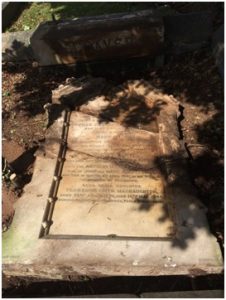 The final resting place of the Irish branch of the family can be found at Belfast City Cemetery, where there are three separate memorials. The saddest of these is the main family memorial which has only recently been revealed having been badly damaged by vandals during the period of civil unrest in Northern Ireland in the 1970s.
The final resting place of the Irish branch of the family can be found at Belfast City Cemetery, where there are three separate memorials. The saddest of these is the main family memorial which has only recently been revealed having been badly damaged by vandals during the period of civil unrest in Northern Ireland in the 1970s.
Thanks to Peter McCabe and Ricky Cole the inscriptions of the memorial have been exposed to remind us of the power, wealth, privilege and good works that came about from the arrival of John Cleaver to Belfast in 1865.
COPYRIGHT RICHARD GRAHAM
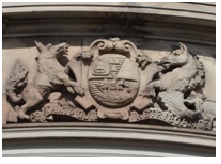

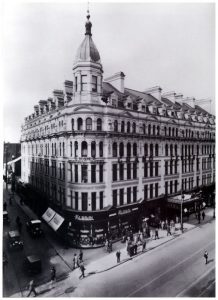
 The finest suites were located on the second floor, and it was in these rooms that guests such as King Leopold of Belgium; Winston Churchill; Mario Lanza and Al Jolson stayed during their visit to the city. The hotel also played host to the cream of Ulster Society where the grand ballroom provided banqueting facilities for some of the most important events in the city, such as the official lunch celebrating the launch of the White Star Liner, RMS Titanic, in 1912.
The finest suites were located on the second floor, and it was in these rooms that guests such as King Leopold of Belgium; Winston Churchill; Mario Lanza and Al Jolson stayed during their visit to the city. The hotel also played host to the cream of Ulster Society where the grand ballroom provided banqueting facilities for some of the most important events in the city, such as the official lunch celebrating the launch of the White Star Liner, RMS Titanic, in 1912.

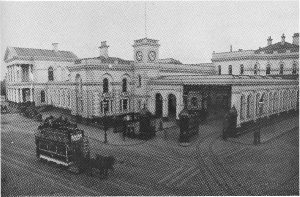
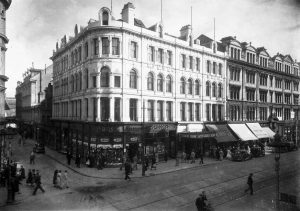
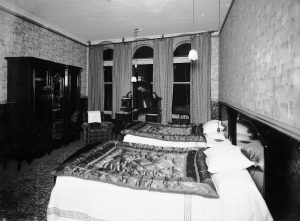

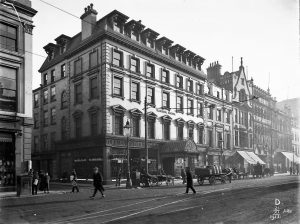 Marketing material of the time proudly proclaimed that “It is highly probable that no establishment in the City of Belfast is so well known in all quarters of the globe as the Imperial Hotel “
Marketing material of the time proudly proclaimed that “It is highly probable that no establishment in the City of Belfast is so well known in all quarters of the globe as the Imperial Hotel “

 The Cleaver family originated in Scotland where one of the earliest recorded marriages took place between William Cleaver and Elizabeth Dunstone on 2nd February 1770. William served in the army, and the couple’s children were born and raised in the parish of Kilmallie, near Fort William in the Scottish Highlands. Upon his death in 1787, the family moved to Bishopstone, a small village close to the south coast of England in East Sussex.
The Cleaver family originated in Scotland where one of the earliest recorded marriages took place between William Cleaver and Elizabeth Dunstone on 2nd February 1770. William served in the army, and the couple’s children were born and raised in the parish of Kilmallie, near Fort William in the Scottish Highlands. Upon his death in 1787, the family moved to Bishopstone, a small village close to the south coast of England in East Sussex. John Cleaver was born in Bishopstone on 23rd September 1841, the great grandson of William Cleaver of Fort William. He served his apprenticeship in retail in London, and in a bid to further his career, he crossed the Irish Sea in 1865 to manage one of the departments in the established firm of James Lindsay & Co; general drapers, silk mercers and linen merchants at the Ulster Arcade on Donegall Place. The Lindsay family had themselves made their way to Ireland from Scotland in 1678, where they played an active role in the Relief of Derry in 1689, before moving to Belfast to establish a “woollen, linen and haberdashery warehouse” at 15 Bridge Street, the then centre of commerce in the town, in 1822.
John Cleaver was born in Bishopstone on 23rd September 1841, the great grandson of William Cleaver of Fort William. He served his apprenticeship in retail in London, and in a bid to further his career, he crossed the Irish Sea in 1865 to manage one of the departments in the established firm of James Lindsay & Co; general drapers, silk mercers and linen merchants at the Ulster Arcade on Donegall Place. The Lindsay family had themselves made their way to Ireland from Scotland in 1678, where they played an active role in the Relief of Derry in 1689, before moving to Belfast to establish a “woollen, linen and haberdashery warehouse” at 15 Bridge Street, the then centre of commerce in the town, in 1822. It was during his time at Lindsay Brothers, that John Cleaver met Edward Robinson, a young man from Ballymena, who had earlier secured for himself an apprenticeship with the same company. His father Alexander, was a woollen draper in the County Antrim town. Both men soon realised the enormous potential for the development of the sale of Irish linen products, and with financial assistance from their families, set up a business partnership in premises on Castle Place in 1870, styled as Robinson & Cleaver.
It was during his time at Lindsay Brothers, that John Cleaver met Edward Robinson, a young man from Ballymena, who had earlier secured for himself an apprenticeship with the same company. His father Alexander, was a woollen draper in the County Antrim town. Both men soon realised the enormous potential for the development of the sale of Irish linen products, and with financial assistance from their families, set up a business partnership in premises on Castle Place in 1870, styled as Robinson & Cleaver.  The success of their business was based on the fact that until that time, it had been almost impossible to obtain locally produced goods at reasonable prices. They were quick to identify this gap in the market and within a short space of time, the business had expanded and the partnership moved to larger premises on High Street (left) in 1879. The potential for growth of such a business in Belfast at that time was phenomenal.
The success of their business was based on the fact that until that time, it had been almost impossible to obtain locally produced goods at reasonable prices. They were quick to identify this gap in the market and within a short space of time, the business had expanded and the partnership moved to larger premises on High Street (left) in 1879. The potential for growth of such a business in Belfast at that time was phenomenal.
 In addition to raising a large family, the business at High Street continued to expand. Belfast was fast becoming one of the leading manufacturing cities of the British Empire, with markets for products produced in North East Ireland opening up across the civilised world. The partners were not slow to capitalise on this phenomenal growth and soon they were supplying high quality items of Irish linen to households across the United Kingdom. Soon the company outgrew their premises on High Street and by the mid-1880s the partners began to look for larger premises. They purchased one of the last residential houses on Donegall Place (see right) which had a large garden onto Donegall Square North, and quickly commissioned one of the leading architects of the day, Young & McKenzie, to design a building that would be fitting for the business they had grown over the past 15 years. The vast majority of parcels despatched from Belfast came from the house of Robinson & Cleaver and the company pioneered overseas sales via their brochures to homes and businesses across the empire.
In addition to raising a large family, the business at High Street continued to expand. Belfast was fast becoming one of the leading manufacturing cities of the British Empire, with markets for products produced in North East Ireland opening up across the civilised world. The partners were not slow to capitalise on this phenomenal growth and soon they were supplying high quality items of Irish linen to households across the United Kingdom. Soon the company outgrew their premises on High Street and by the mid-1880s the partners began to look for larger premises. They purchased one of the last residential houses on Donegall Place (see right) which had a large garden onto Donegall Square North, and quickly commissioned one of the leading architects of the day, Young & McKenzie, to design a building that would be fitting for the business they had grown over the past 15 years. The vast majority of parcels despatched from Belfast came from the house of Robinson & Cleaver and the company pioneered overseas sales via their brochures to homes and businesses across the empire. The ‘Royal Irish Linen Warehouse’ of Robinson & Cleaver opened for business on September 1888, the same year that Belfast received its charter as a city. With success came great wealth for the founding partners and by this time, they would have been the equivalent of millionaires in today’s money. This precipitated a move to a larger house on the Malone Road for the Cleaver family – a large Victorian terrace opposite Fisherwick Presbyterian Church.
The ‘Royal Irish Linen Warehouse’ of Robinson & Cleaver opened for business on September 1888, the same year that Belfast received its charter as a city. With success came great wealth for the founding partners and by this time, they would have been the equivalent of millionaires in today’s money. This precipitated a move to a larger house on the Malone Road for the Cleaver family – a large Victorian terrace opposite Fisherwick Presbyterian Church. In 1892, such was the success of Robinson & Cleaver, that John Cleaver moved residence again, this time to the estate of ‘Dunraven’ on the Malone Road. Dunraven, a large Italianate Villa, had been built for the timber magnate and shipowner, James Porter Corry in 1870. It extended over several acres with its own lake and extensive parkland. It was in this house that John and Mary would spend the rest of their lives.
In 1892, such was the success of Robinson & Cleaver, that John Cleaver moved residence again, this time to the estate of ‘Dunraven’ on the Malone Road. Dunraven, a large Italianate Villa, had been built for the timber magnate and shipowner, James Porter Corry in 1870. It extended over several acres with its own lake and extensive parkland. It was in this house that John and Mary would spend the rest of their lives.  By 1900, his eldest son, (aged 29) Arthur Spencer Cleaver, in addition to becoming a director of Robinson & Cleaver, had embarked on a military career and became a second Lieutenant in the Southern Division of the Mid Ulster (Royal Field) Artillery (left) – a regiment within the British Army. He removed to London, primarily to look after the Regent Street store at the same time becoming an Honorary Lieutenant Colonel with the Royal Garrison Artillery, 1st Reserve Battery.
By 1900, his eldest son, (aged 29) Arthur Spencer Cleaver, in addition to becoming a director of Robinson & Cleaver, had embarked on a military career and became a second Lieutenant in the Southern Division of the Mid Ulster (Royal Field) Artillery (left) – a regiment within the British Army. He removed to London, primarily to look after the Regent Street store at the same time becoming an Honorary Lieutenant Colonel with the Royal Garrison Artillery, 1st Reserve Battery.  It was however his wife, Adelaide, who achieved notoriety as an adventurer and women pioneer in aviation in the 1920s and 30s. She was an avid mountain climber, expert driver and skilled motor mechanic. Adelaide Franklin Pollock was born in Newtownards in 1896, the eldest daughter of the Rt Hon Hugh MacDowell Pollock, first Minister of Finance in the Government of Northern Ireland created in 1921. Having developed an important flour importing business, Pollock was independently wealthy, and as Chairman of the Belfast Harbour Commissioners had one of the docks named in his honour. Coming from such a privileged position within Ulster Society this was the type of union John Cleaver would have nurtured and encouraged for his offspring.
It was however his wife, Adelaide, who achieved notoriety as an adventurer and women pioneer in aviation in the 1920s and 30s. She was an avid mountain climber, expert driver and skilled motor mechanic. Adelaide Franklin Pollock was born in Newtownards in 1896, the eldest daughter of the Rt Hon Hugh MacDowell Pollock, first Minister of Finance in the Government of Northern Ireland created in 1921. Having developed an important flour importing business, Pollock was independently wealthy, and as Chairman of the Belfast Harbour Commissioners had one of the docks named in his honour. Coming from such a privileged position within Ulster Society this was the type of union John Cleaver would have nurtured and encouraged for his offspring. See thread on Rootschat here:
See thread on Rootschat here:  Gordon Neil Spencer ‘Mouse’ Cleaver was born in Stanmore, Middlesex, in 1910, and educated at Harrow. As an accomplished skier, he was the inaugural winner of the ‘Hahnenkammrennen Combined’ in Austria in 1931. The ‘Cleaver Cup’ was subsequently named after his success on the slopes. He joined 601 Fighter Squadron (The Millionaire’s Squadron) Auxiliary Air Force in 1937, being promoted to the position of Flying Officer in October 1938. Upon the outbreak of the Second World War he was mobilised in November 1939, travelling to France with his Squadron to Merville in Northern France. He claimed 7 confirmed “kills” during the Battle of Britain before his hurricane was shot down during combat over Winchester. Although he baled out, the fragments from the Perspex canopy on his plane, shattered into his eyes and face blinding him in the right eye. For his valour, he was awarded the Distinguished Flying Cross (DFC). Despite his injuries he remained in the RAF throughout the war, being released on medical grounds in November 1943, retaining the rank of Squadron Leader. Following on from the injuries he received, Cleaver underwent 18 operations on his eyes under the accomplished eye surgeon Harold Ridley. It was during work carried out during these procedures that Ridley developed the intraocular lens, a major development in repairing damage to the human eye.
Gordon Neil Spencer ‘Mouse’ Cleaver was born in Stanmore, Middlesex, in 1910, and educated at Harrow. As an accomplished skier, he was the inaugural winner of the ‘Hahnenkammrennen Combined’ in Austria in 1931. The ‘Cleaver Cup’ was subsequently named after his success on the slopes. He joined 601 Fighter Squadron (The Millionaire’s Squadron) Auxiliary Air Force in 1937, being promoted to the position of Flying Officer in October 1938. Upon the outbreak of the Second World War he was mobilised in November 1939, travelling to France with his Squadron to Merville in Northern France. He claimed 7 confirmed “kills” during the Battle of Britain before his hurricane was shot down during combat over Winchester. Although he baled out, the fragments from the Perspex canopy on his plane, shattered into his eyes and face blinding him in the right eye. For his valour, he was awarded the Distinguished Flying Cross (DFC). Despite his injuries he remained in the RAF throughout the war, being released on medical grounds in November 1943, retaining the rank of Squadron Leader. Following on from the injuries he received, Cleaver underwent 18 operations on his eyes under the accomplished eye surgeon Harold Ridley. It was during work carried out during these procedures that Ridley developed the intraocular lens, a major development in repairing damage to the human eye. His second son, (John) Martin Cleaver, born in 1871, was educated in England and Germany, gaining a BA from the Royal University of Ireland (precursor to QUB) and graduating from TCD with a law degree in 1893. He set up his own practice as a solicitor later that year at premises on Wellington Place. In 1897, he took into partnership William Fulton, whose father John Fulton, was a linen manufacturer at the firm of John Fulton & Co on Ormeau Avenue. The partnership was style as Cleaver & Fulton. Both the Cleavers and Fultons were Methodists, with John Fulton being greatly interested in Foreign Missions, in addition to being solicitor to the Board of Governors at Methodist College. Soon after the partnership was established, Martin Cleaver, influenced by Fulton’s vision, retired from the law, devoting his whole time to the Egypt General Mission of which he was one of the founders. He arrived in Alexandria, Egypt on 31st January 1898, one of a group of 7 missionaries where he met Aileen Mary White, who had also carried out missionary work in Egypt. After their marriage, they both returned to Alexandria, but after four years of travelling in North Africa, his health broke down, and he took up residence in London as Secretary to the Mission.He later went on to co-found the ‘Fellowship of Faith for the Muslims’ (1915) an international fellowship of Christians who have a concern for the Muslim world, publishing such pamphlets as “Why do the Muslims need the Gospel?”Having been at Keswick in 1915, he returned to visit his father at Dunraven in Belfast, but became ill and died during that visit in August of that year. Both J Martin Cleaver and his wife Aileen are buried at Belfast City Cemetery. The company he established in 1893, Cleaver Fulton Rankin, remains one of Northern Ireland’s leading law firms.
His second son, (John) Martin Cleaver, born in 1871, was educated in England and Germany, gaining a BA from the Royal University of Ireland (precursor to QUB) and graduating from TCD with a law degree in 1893. He set up his own practice as a solicitor later that year at premises on Wellington Place. In 1897, he took into partnership William Fulton, whose father John Fulton, was a linen manufacturer at the firm of John Fulton & Co on Ormeau Avenue. The partnership was style as Cleaver & Fulton. Both the Cleavers and Fultons were Methodists, with John Fulton being greatly interested in Foreign Missions, in addition to being solicitor to the Board of Governors at Methodist College. Soon after the partnership was established, Martin Cleaver, influenced by Fulton’s vision, retired from the law, devoting his whole time to the Egypt General Mission of which he was one of the founders. He arrived in Alexandria, Egypt on 31st January 1898, one of a group of 7 missionaries where he met Aileen Mary White, who had also carried out missionary work in Egypt. After their marriage, they both returned to Alexandria, but after four years of travelling in North Africa, his health broke down, and he took up residence in London as Secretary to the Mission.He later went on to co-found the ‘Fellowship of Faith for the Muslims’ (1915) an international fellowship of Christians who have a concern for the Muslim world, publishing such pamphlets as “Why do the Muslims need the Gospel?”Having been at Keswick in 1915, he returned to visit his father at Dunraven in Belfast, but became ill and died during that visit in August of that year. Both J Martin Cleaver and his wife Aileen are buried at Belfast City Cemetery. The company he established in 1893, Cleaver Fulton Rankin, remains one of Northern Ireland’s leading law firms. John Cleaver’s third son, (James) Frederick was born at Ashley Villa on 8th June 1875, and after being educated in Belfast and Germany, he travelled the world, visiting Australia and New Zealand, before following his father into the family business at Robinson & Cleaver, in 1895. The firm had developed branches throughout the UK including Regent Street, London; and Church Street, Liverpool. The importance of the company to the economy of Belfast cannot be underestimated. Robinson & Cleaver sent more parcels containing linen products of Irish manufacture out of the city of Belfast than any other business. Their store on London’s Regent Street was one of the most opulent and exclusive in the capital (right). He soon became Managing Director of the firm at its headquarters on Donegall Place (1906) and resided at a house called ‘Bishopstone’ on Deramore Park, recalling the origins of his father’s home in Essex. He married, in 1901, Sarah Hammond Fulton, eldest daughter of John Fulton and sister of the partner of his brother’s law firm, Cleaver and Fulton (see J Martin Cleaver).
John Cleaver’s third son, (James) Frederick was born at Ashley Villa on 8th June 1875, and after being educated in Belfast and Germany, he travelled the world, visiting Australia and New Zealand, before following his father into the family business at Robinson & Cleaver, in 1895. The firm had developed branches throughout the UK including Regent Street, London; and Church Street, Liverpool. The importance of the company to the economy of Belfast cannot be underestimated. Robinson & Cleaver sent more parcels containing linen products of Irish manufacture out of the city of Belfast than any other business. Their store on London’s Regent Street was one of the most opulent and exclusive in the capital (right). He soon became Managing Director of the firm at its headquarters on Donegall Place (1906) and resided at a house called ‘Bishopstone’ on Deramore Park, recalling the origins of his father’s home in Essex. He married, in 1901, Sarah Hammond Fulton, eldest daughter of John Fulton and sister of the partner of his brother’s law firm, Cleaver and Fulton (see J Martin Cleaver). Fred Cleaver was a staunch Unionist and Ulsterman. He was an active member of the Belfast Chamber of Commerce; the Royal Ulster Agricultural Society; the Belfast Harbour Board; The Belfast Chamber of Trade, and was Chairman of the Ulster Tourist Development Association. As a member of the Ulster Unionist Council, he took an active part in the Anti Home Rule campaign and he took a leading part in the organising and equipping of the Ulster Division in the run-up to the Great War of 1914-18. During the war, he led an expedition to retrieve the US crew of the SS Otranto which sank in 1918 whilst in use as an armed merchant cruiser. For his services, he was Knighted in 1927. Upon his father’s death in 1926, Sir Frederick became Chairman of Robinson & Cleaver, but such was the international reputation of the company that several approached were made to acquire the capital from the family controlled concern. The ordinary shares of the company were transferred to Edward de Stein, a merchant banker, in 1935, with Sir Frederick and his brother Arthur being retained in an advisory capacity.
Fred Cleaver was a staunch Unionist and Ulsterman. He was an active member of the Belfast Chamber of Commerce; the Royal Ulster Agricultural Society; the Belfast Harbour Board; The Belfast Chamber of Trade, and was Chairman of the Ulster Tourist Development Association. As a member of the Ulster Unionist Council, he took an active part in the Anti Home Rule campaign and he took a leading part in the organising and equipping of the Ulster Division in the run-up to the Great War of 1914-18. During the war, he led an expedition to retrieve the US crew of the SS Otranto which sank in 1918 whilst in use as an armed merchant cruiser. For his services, he was Knighted in 1927. Upon his father’s death in 1926, Sir Frederick became Chairman of Robinson & Cleaver, but such was the international reputation of the company that several approached were made to acquire the capital from the family controlled concern. The ordinary shares of the company were transferred to Edward de Stein, a merchant banker, in 1935, with Sir Frederick and his brother Arthur being retained in an advisory capacity. Sir Frederick Cleaver died suddenly on the evening of Saturday 31st March 1936, following his decision to take a walk from his home, Marlborough Park House, to which he had moved in 1927 (left). He had reached Stranmillis Road, when he collapsed and died. He was survived by his wife Lady Sarah Cleaver who died at Broomhill Park in December 1951. Like so many other members of the family, she also took an active interest in the work of the Methodist missions.
Sir Frederick Cleaver died suddenly on the evening of Saturday 31st March 1936, following his decision to take a walk from his home, Marlborough Park House, to which he had moved in 1927 (left). He had reached Stranmillis Road, when he collapsed and died. He was survived by his wife Lady Sarah Cleaver who died at Broomhill Park in December 1951. Like so many other members of the family, she also took an active interest in the work of the Methodist missions. John Cleaver’s eldest surviving daughter, Mabel, was born in March 1877 and in what was not perhaps a surprising move, she married Edward (Ned) Robinson on 12th June 1901 at University Road Methodist Church. Ned Robinson was the eldest son of Edward Robinson, one of the founders of Robinson & Cleaver and was a joint managing director of the firm at Donegall Place. They began their married life at a house on Somerton Park, but following the death of his father in 1906, they moved to a magnificent estate at Shaw’s Bridge overlooking the Lagan named Terrace Hill. It was the sale of the company to Edward De Stein in 1936, that precipitated the couple to demolish the original house of 1856. Ned and Mabel who enjoyed a fantastic social life, built a sprawling new house in an American neo-Georgian style, the design being executed by Young & McKenzie, (who designed the original store on Donegall Place in 1888) and in which they could entertain the cream of Ulster Society. Mabel had two daughters, who were brought up in a very privileged environment. Terrace Hill extended to over 9,200 sq feet, and had beautifully manicured gardens overlooking Barnett’s Demesne to Malone House on the other side of the valley. The house had tennis courts and a swimming pool. The eldest, Gwendoline, married Peter Swann, an insurance broker of the Wirral and left Northern Ireland in 1951, whilst Inez married Thomas Agnew, a land agent in Belfast. They were the last occupants to live at Macedon House at Whiteabbey, before it was taken over by Barnardo’s as a children’s home in 1950, as was Terrace Hill, after the departure of the Clokey family in 1970. Inez died in 1978 without issue
John Cleaver’s eldest surviving daughter, Mabel, was born in March 1877 and in what was not perhaps a surprising move, she married Edward (Ned) Robinson on 12th June 1901 at University Road Methodist Church. Ned Robinson was the eldest son of Edward Robinson, one of the founders of Robinson & Cleaver and was a joint managing director of the firm at Donegall Place. They began their married life at a house on Somerton Park, but following the death of his father in 1906, they moved to a magnificent estate at Shaw’s Bridge overlooking the Lagan named Terrace Hill. It was the sale of the company to Edward De Stein in 1936, that precipitated the couple to demolish the original house of 1856. Ned and Mabel who enjoyed a fantastic social life, built a sprawling new house in an American neo-Georgian style, the design being executed by Young & McKenzie, (who designed the original store on Donegall Place in 1888) and in which they could entertain the cream of Ulster Society. Mabel had two daughters, who were brought up in a very privileged environment. Terrace Hill extended to over 9,200 sq feet, and had beautifully manicured gardens overlooking Barnett’s Demesne to Malone House on the other side of the valley. The house had tennis courts and a swimming pool. The eldest, Gwendoline, married Peter Swann, an insurance broker of the Wirral and left Northern Ireland in 1951, whilst Inez married Thomas Agnew, a land agent in Belfast. They were the last occupants to live at Macedon House at Whiteabbey, before it was taken over by Barnardo’s as a children’s home in 1950, as was Terrace Hill, after the departure of the Clokey family in 1970. Inez died in 1978 without issue Today there are several reminders of the power and influence of the Cleaver family in Ireland, although there are no remaining family members now resident here. The site of the once magnificent family home and estate at Dunraven, is now covered in villa developments from the 1930s, when the house was sold, and is now known as Cleaver Park and Cleaver Avenue, off the Malone Road.
Today there are several reminders of the power and influence of the Cleaver family in Ireland, although there are no remaining family members now resident here. The site of the once magnificent family home and estate at Dunraven, is now covered in villa developments from the 1930s, when the house was sold, and is now known as Cleaver Park and Cleaver Avenue, off the Malone Road. The magnificent department store buildings of Robinson & Cleaver still stand on the Corner of Donegall Place and Donegall Square North, as they do in London, although the family connection with the business was severed in 1936. The achievements of the company in obtaining several Royal Warrants and supplying Royal households across the world was none the less remarkable
The magnificent department store buildings of Robinson & Cleaver still stand on the Corner of Donegall Place and Donegall Square North, as they do in London, although the family connection with the business was severed in 1936. The achievements of the company in obtaining several Royal Warrants and supplying Royal households across the world was none the less remarkable The final resting place of the Irish branch of the family can be found at Belfast City Cemetery, where there are three separate memorials. The saddest of these is the main family memorial which has only recently been revealed having been badly damaged by vandals during the period of civil unrest in Northern Ireland in the 1970s.
The final resting place of the Irish branch of the family can be found at Belfast City Cemetery, where there are three separate memorials. The saddest of these is the main family memorial which has only recently been revealed having been badly damaged by vandals during the period of civil unrest in Northern Ireland in the 1970s.

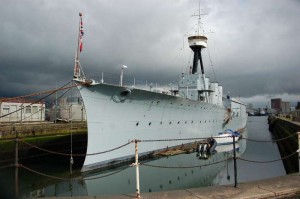 A sea of lights to remember those from North Belfast who died in the First World War.
A sea of lights to remember those from North Belfast who died in the First World War.
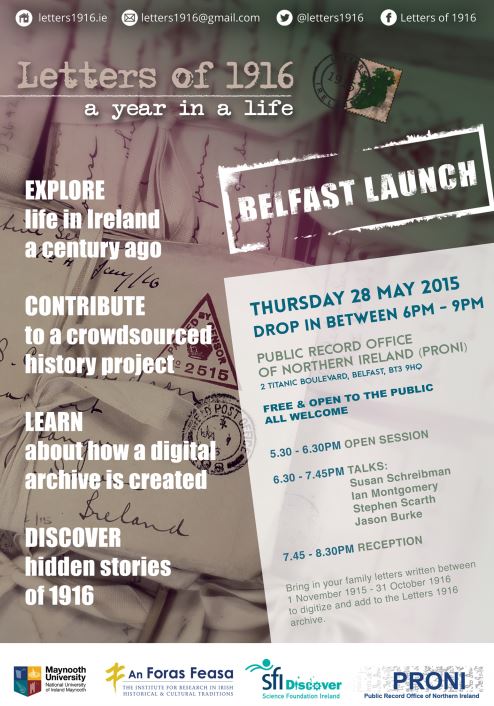
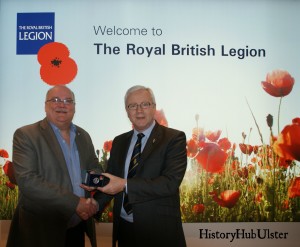
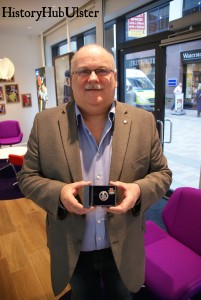 Brian said, “I was browsing in the hope of finding my own grand-fathers lost medals but seeing this badge’s local connection, I believed that it could and should be reunited with Albert Baxter’s family. It was an act of Remembrance really and I posted an appeal on the Facebook page that I administer for the Limerick Branch of the Royal British Legion. Our Belfast following is quite strong and I was confident someone there would be able to help”.
Brian said, “I was browsing in the hope of finding my own grand-fathers lost medals but seeing this badge’s local connection, I believed that it could and should be reunited with Albert Baxter’s family. It was an act of Remembrance really and I posted an appeal on the Facebook page that I administer for the Limerick Branch of the Royal British Legion. Our Belfast following is quite strong and I was confident someone there would be able to help”.